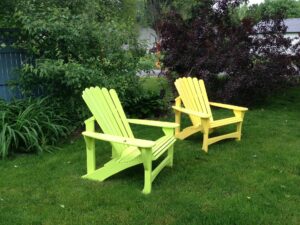Bermuda Grass is a go-to turf worldwide. Its hardiness is unparalleled, and thanks to some clever breeding, it’s now as soft underfoot as any other (often more fine-bladed) option.
So where did this wondergrass come from?
Bermuda would seem like the logical answer, but it couldn’t be further from the truth.
The grass actually originates from the African Savannah and India. It found its way to the United States via Bermuda by hiding in hay on slave ships. The Americans thought it was from Bermuda, hence the name.
The Americans quickly noticed its favourable properties for pastures, lawns, and even golf course coverings!
Bermuda grass is a hardy bugger – its extensive root system lends itself well to extreme climates, including coastal areas. Even insects and disease don’t tend to bother this plant.
For hot, sunny and adverse climates, Bermuda grass is your go-to. It easily withstands drought and cold weather conditions. In a dry spell the leaves will turn brown, but they’ll bounce right back after a downpour and return to their green-with-purple-tips colouring.
Even soil type doesn’t really bother Bermuda grass. Whether it’s clay or sand; acid, alkaline, or salty, this grass doesn’t really mind. As long as there’s good drainage and you treat it to somefertiliser, this grass will be as happy as Larry.
Basically, Bermuda grass is un-killable. If your thumb is far from green, this is the lawn for you!
How to Grow From Seed
Once again, Bermuda varieties are about as easy to grow from seed as you can possibly find. Grab some seeds from McKay’s and you’ll have a lush lawn in no time.
The best time to sow these babies is summer – temperatures above 30 degrees are what those seeds will love. They’ll start germinating in 7 to 10 days, and in 60 to 90 days you’ll have a glorious, fully-grown covering.
When Good Lawn Goes Bad
We’ve discussed the glories of choosing Bermuda grass for a specific purpose, but what if you’re actually trying to get rid of this stubborn covering?
You’ve moved into a new home with some rampant Bermuda grass, or you’re giving your garden a makeover, or perhaps it’s just got a little bit too cozy with your vegetable patch or flower bed. What do you do?
Herbicide is your first port of call. For herbicide to be most effective we need to remember that herbicide is absorbed from the leaves, not the roots. You need to get good coverage over the leaves and apply the herbicide when the leaves aren’t dormant.
This means attacking between spring and autumn when the leaves are full and green and absorbing everything they possibly can.
To really make a big impact on your pesky Bermuda grass don’t mow it. Give it a good watering one to two weeks before the application of herbicide. By the time rolls around to make your attack the leaves with be big and green and well spread out. They’ll gobble up that herbicide like there’s no tomorrow, and then it won’t know what hit it. 7 to 10 days and that Bermuda grass will be dead. You – 1, Bermuda grass – 0.
Repeating the watering-herbiciding process every 10 days for a few cycles will ensure that any new shoots will be stopped in their tracks.
One VERY important thing to remember is that herbicide is not selective. It’ll obliterate anything it comes into contact with. So if your Bermuda grass problem is in and around some plants that you do want, you need to be very careful.
Putting up a cardboard or plastic sheet barrier between the Bermuda and other plants should stop the herbicide from spraying onto wanted plants if you’re using a spray pack. Using a paint roller is a great way (if not a bit more time consuming) to be very specific in your application to really make sure your precious plants don’t come into contact with the unforgiving herbicide.
Bermuda grass is fantastic when you’re looking for a hardy, low-maintenance covering. If you live in an area with a particularly harsh environment, you really can’t go wrong. If there’s one downfall of Bermuda varieties it’s that they’re too good at growing and covering.
Keep an eye on your Bermuda grass so you don’t have to go through the process of trying to reign it in!


